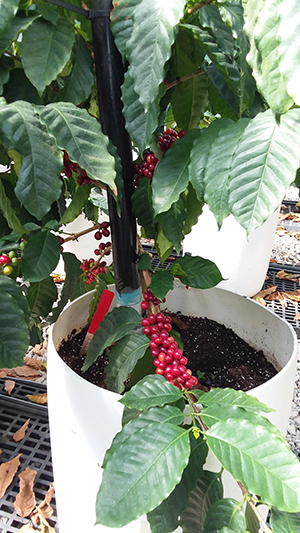A changing climate could lead to a new crop for Florida producers.

University of Florida (UF) scientists are already growing coffee plants at the UF/IFAS Plant Science Research and Education Unit. This could lead to coffee being produced in the Sunshine State one day.
The project, which is a collaboration between the UF Herbert Wertheim College of Engineering and UF/IFAS, is funded by a grant from the USDA National Institute of Food and Agriculture.
“Coffee is a crop of global interest that is already facing major challenges due to climate change. At present, the world knows very little about coffee plant roots, their architectures and their function under climate change conditions. The roots are key points in this process,” Rowland said.
Use of Minirhizotrons
Researchers are using minirhizotrons, which are clear plastic tubes with tiny cameras inside. This helps them better understand how coffee grows in the field. The devices record images of their roots, as they are placed underground next to the plants.
Because Minirhizotrons collects so much data, UF/IFAS scientists are collaborating with Alina Zare and Sanjeev Koppal in the College of Engineering to apply artificial intelligence (AI) and machine learning technology to improve and speed up the process.
Zare will develop artificial intelligence approaches to automatically process and understand the minirhizotron imagery. Koppal will develop new computer vision-based hyperspectral imaging systems to capture more information about the roots and the soil surrounding them than can be obtained from current minirhizotron systems.
“Minirhizotron datasets are extremely large, require lots of image processing, and are fraught with tremendous measurement variability given the small apertures involved. All of these problems are amenable to machine learning approaches,” Rowland said. “We believe that current algorithms under development by our collaboration will be able to automate and accelerate substantial portions of data collection from minirhizotron data.”
Minirhizotrons will collect data from the coffee plants growing at the UF/IFAS Plant Science Research and Education Unit, where the researchers have planted coffee alongside existing citrus trees.
“Coffee is very sensitive to the cold, so our thought was to try to grow it with another tree that could shelter it. In addition, the citrus grove has freeze protection systems installed, so that could also protect the coffee,” Rowland said.
While the researchers are growing coffee alongside citrus for practical reasons right now, the combination could one day be economically advantageous, they said.
“As we thought more about it, we could also explore the combination of citrus and coffee as a possible cropping system in Florida — perhaps a future option the citrus growers might consider. This is a ways off — different questions and logistics would have to be worked out — but definitely worth exploring,” Wilson said.
The research team is growing Arabica coffee. Globally, Arabica is the most commonly grown variety and the most valuable one on the market.
For more information, see UF/IFAS News.









